
Daily lettering: italic in multi-color gouaches


Calligraphy and book arts in the studio of Beth Lee, Bozeman, MT

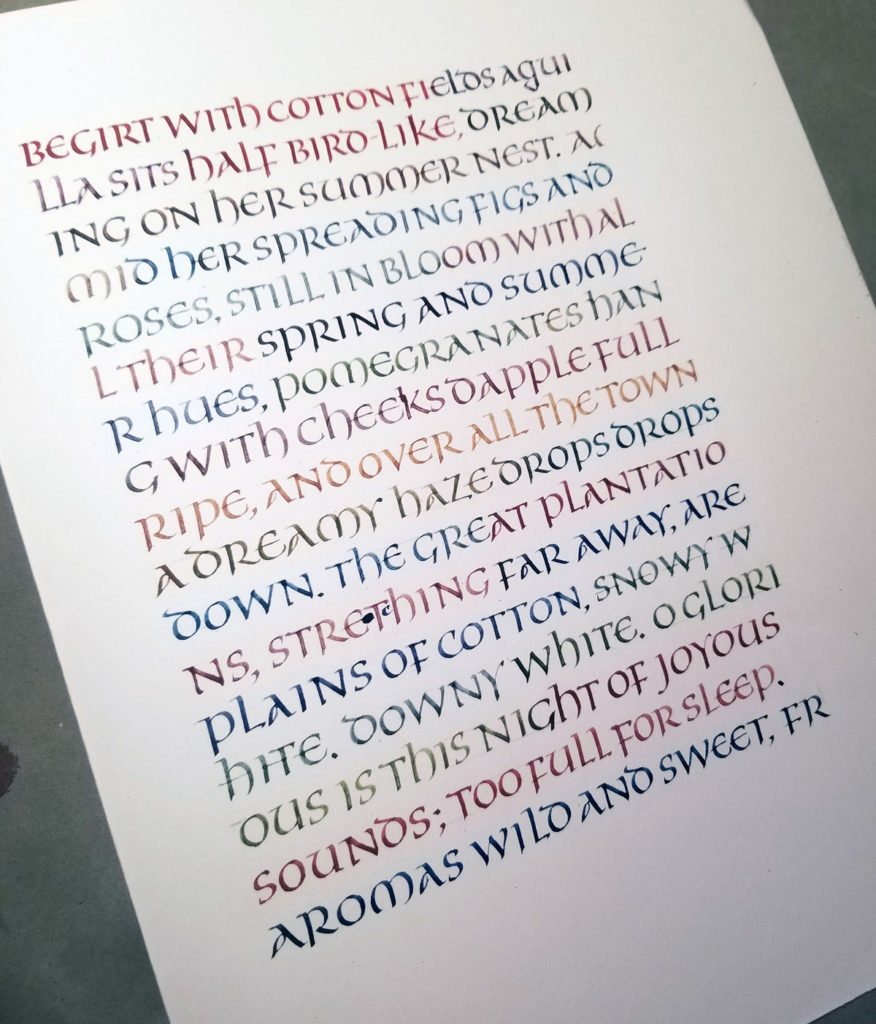
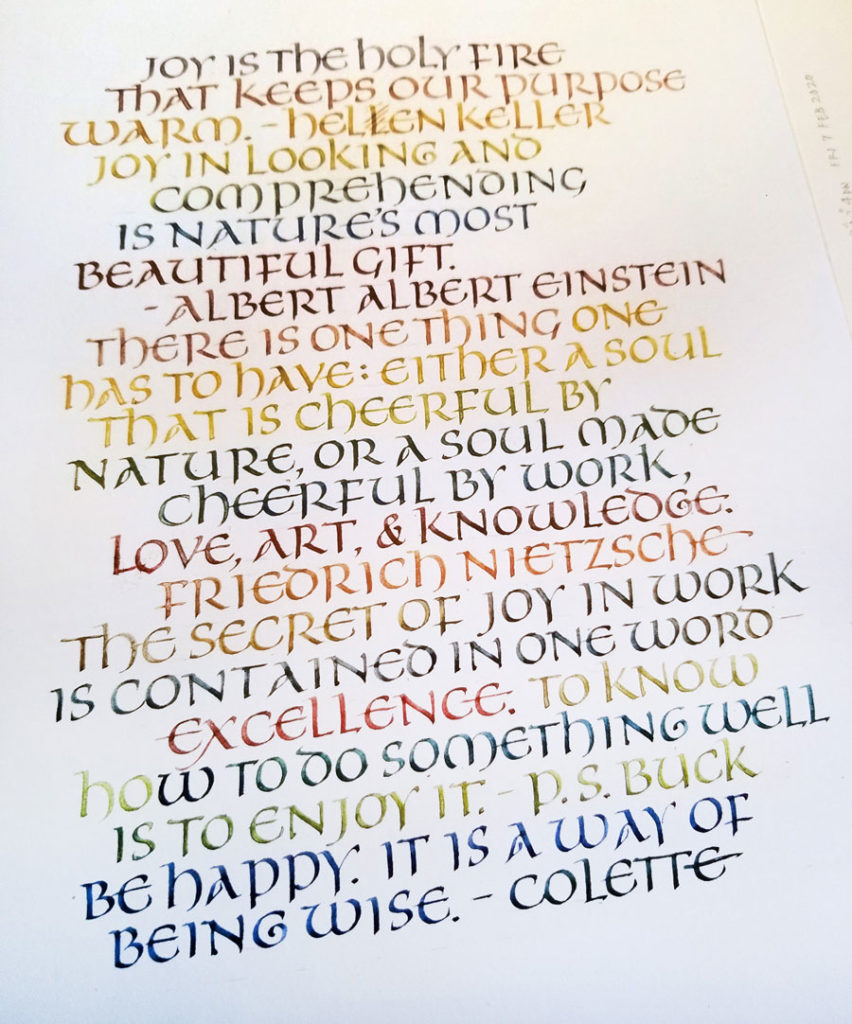
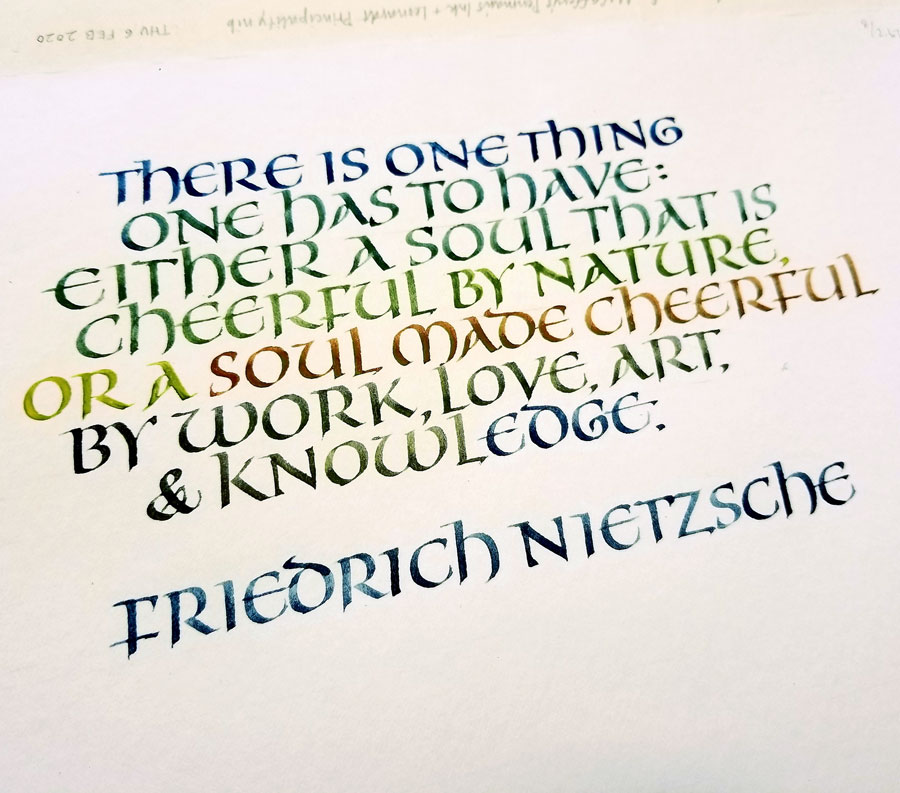
The past few days’ daily lettering have been all about uncials, particularly one old exemplar that is unlabeled except for “late XII England”.
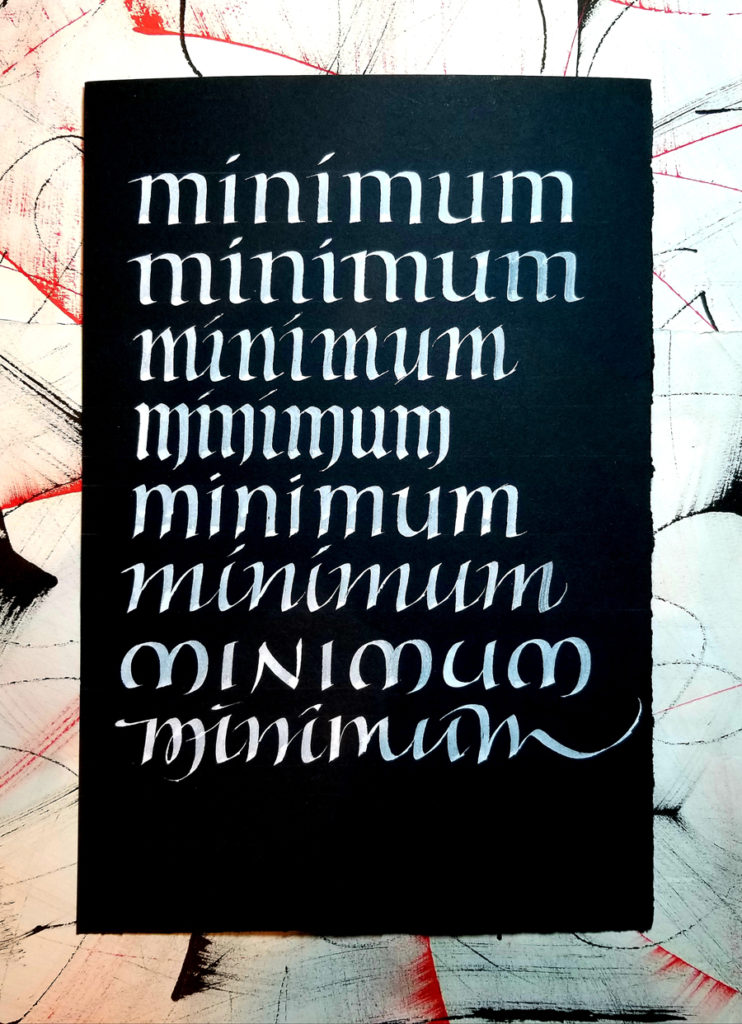
As “the quick brown fox jumps over the lazy dog” is considered to be the quintessential abecedarium, so “minimum” is the stock word for practicing letter spacing. Here the challenge was to change the style each line while keeping each line as consistent as possible. Difficult! Here were the styles/rules I had in mind on each line:
practicing one script : working/playing in this manner :: practicing a straight scale : improvising a Hanon exercise using a jazz scale and syncopated rhythm

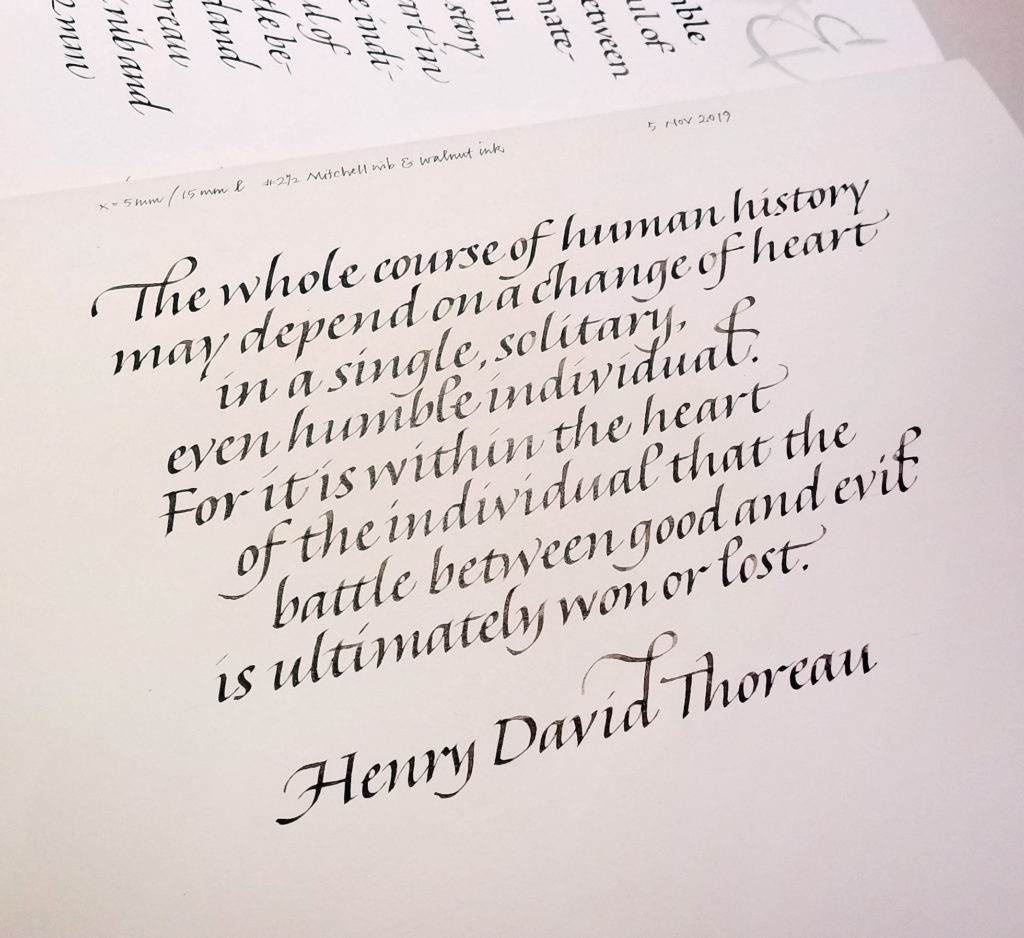
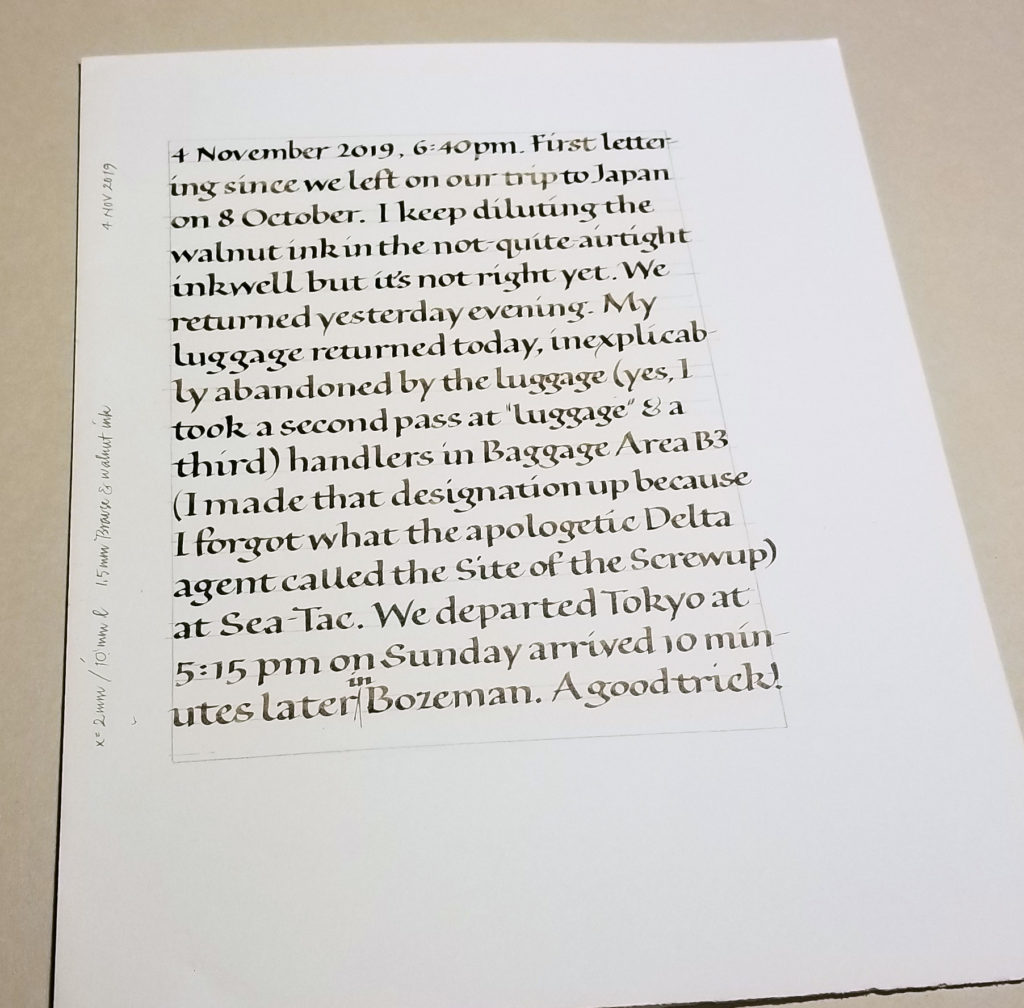
Home again, after a month in Japan. And back to daily lettering practice.
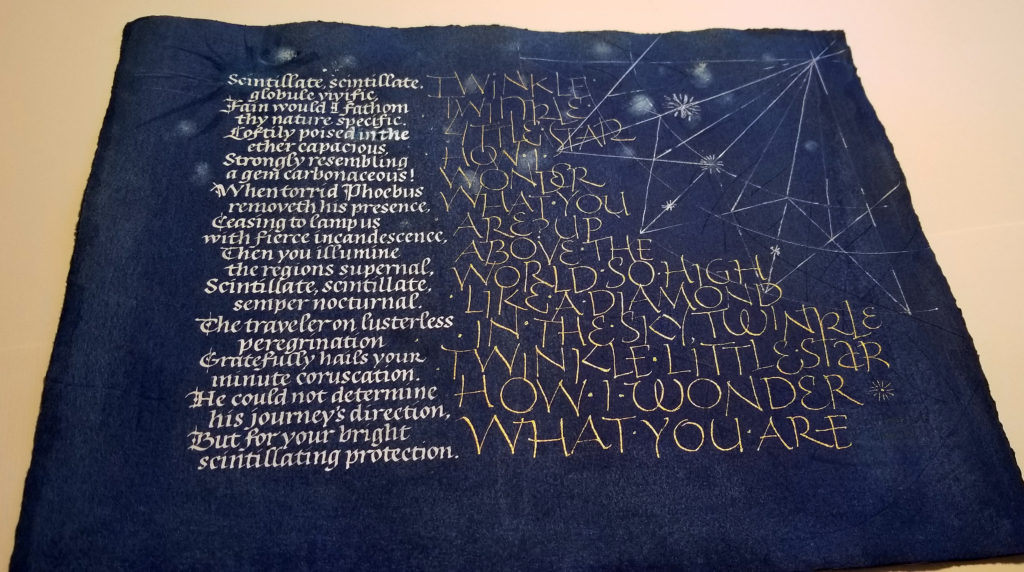
Sometimes in the making of a book edition, you get stuck. I am, or was. I’ve been working with a few texts about stars, and had dyed a stack of Arches Text Wove. The possibilities for structure and order and style having overwhelmed me, I took a step back and chose just one of the texts for a broadside. Nothing like a deadline to get the ink flowing. This was made for submission to “Inktober” an exhibit whose main requirement was that it include ink. The theme for the exhibit is “a few of my favorite things”. Stars are more than a few of my favorite things.
After just a few days off, the hand seems to slip through my fingers when I lose focus, but I am enjoying gothicized italic. This page was done June 11.

I’ve been negligent here on my blog — has it really been two months? to the day! — but I’ve been working pretty steadily in my studio. Here are a few pages of daily lettering, mostly delving into gothicized italic and uncial letter forms.
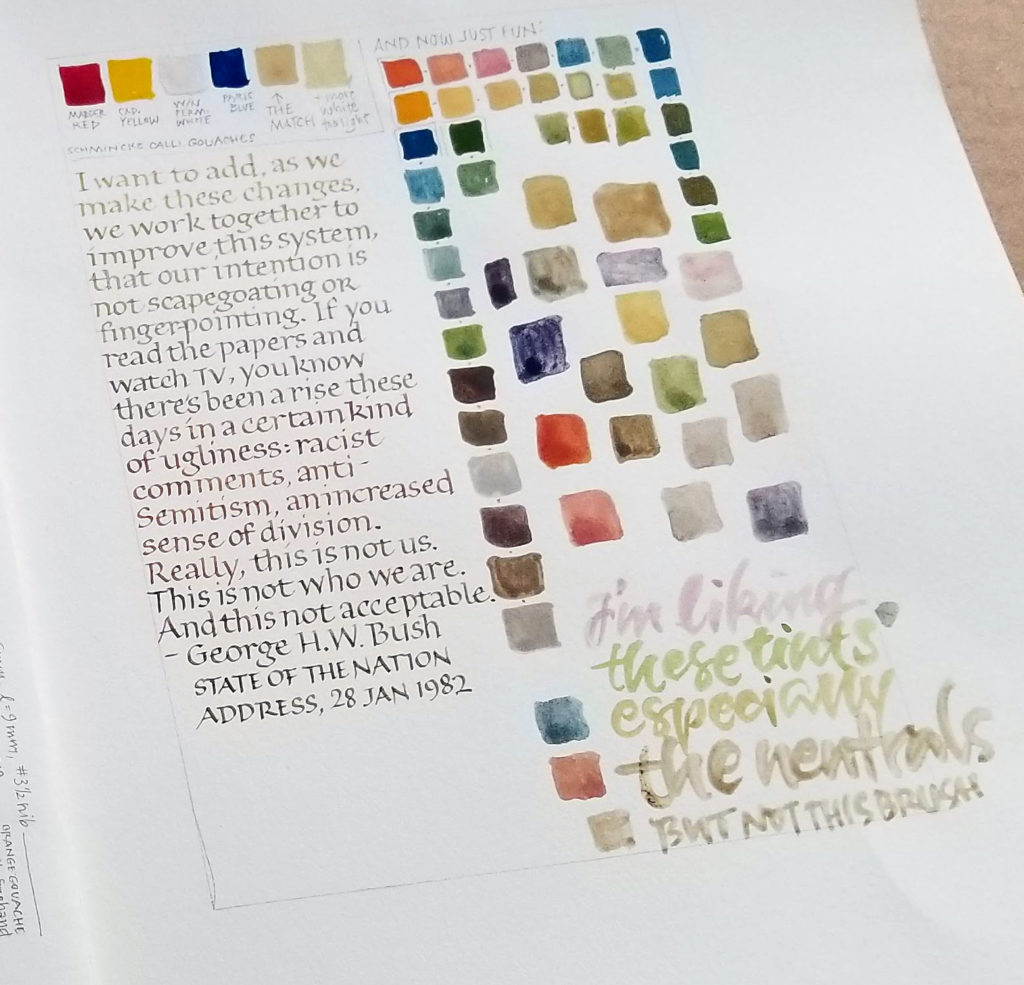
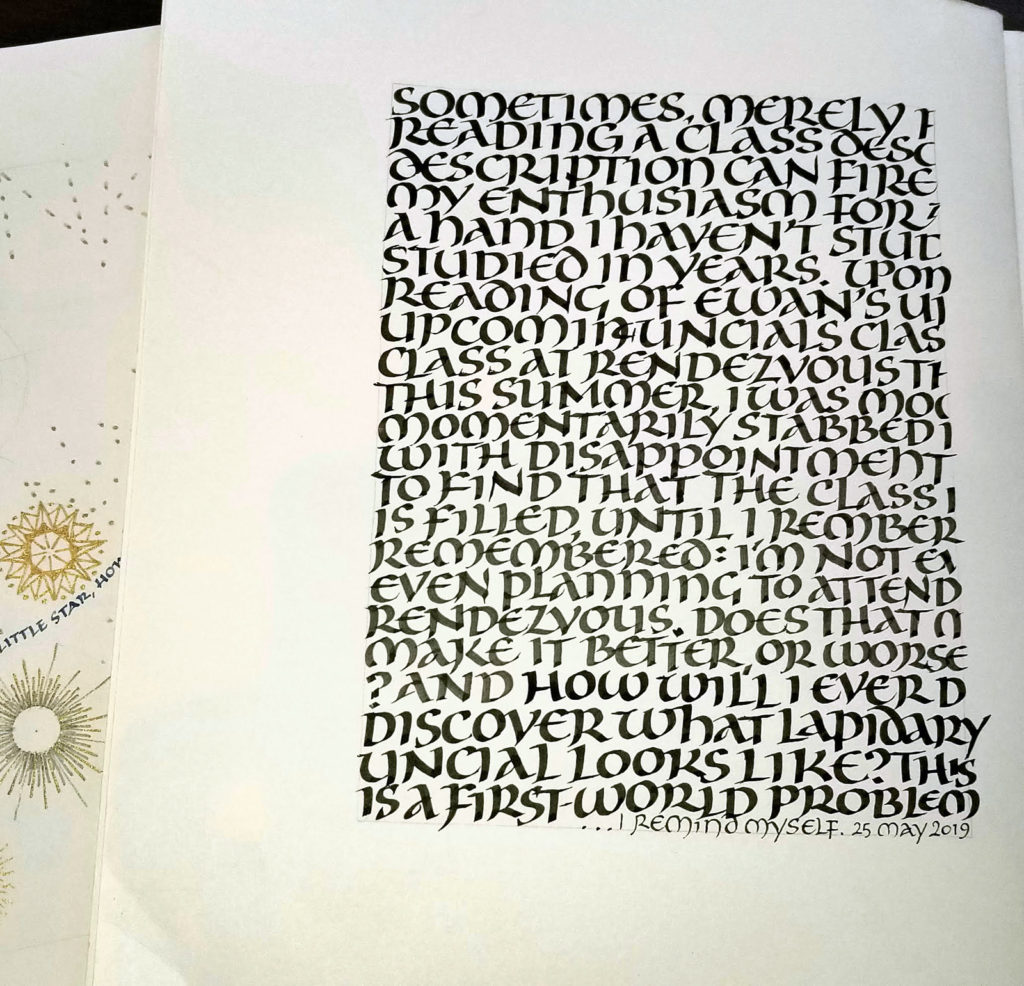
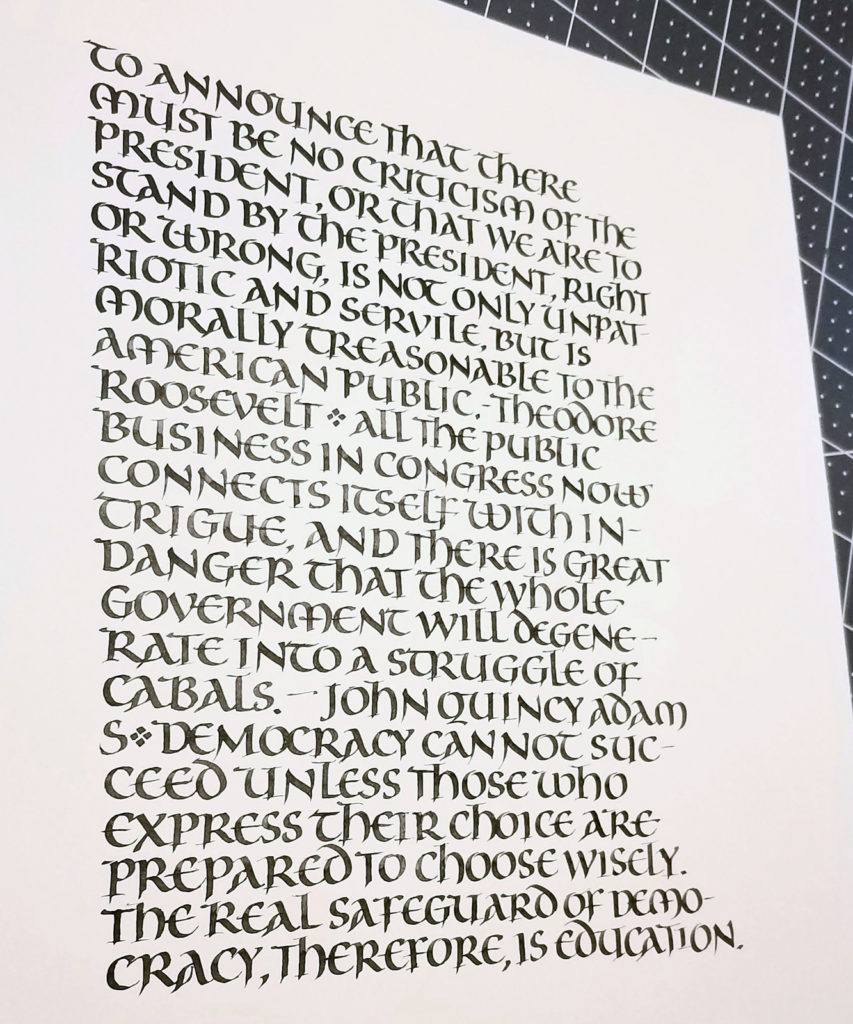
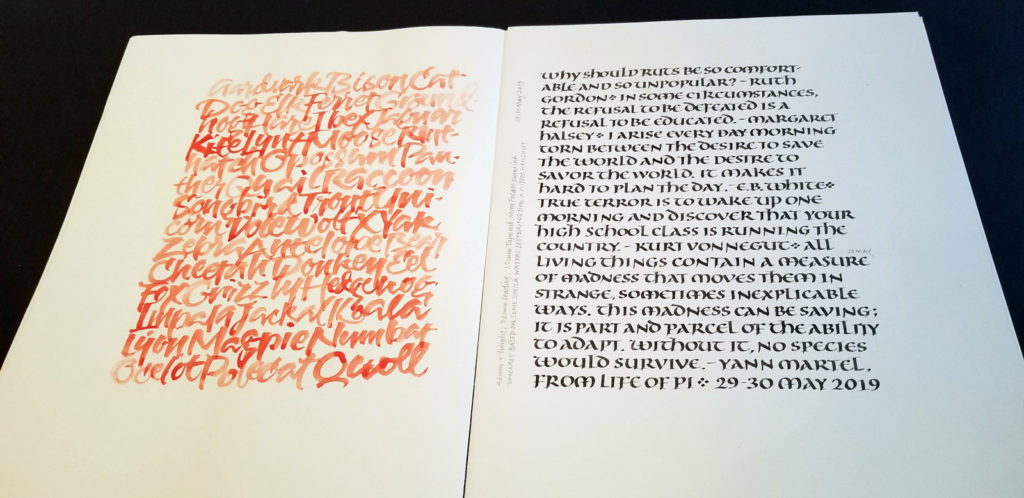

I’ve been studying gothicized italic, a hand I’ve never mastered. I began by analyzing a handout of a Lincoln quotation that Sheila Waters provided in a long-ago workshop. I determined the x-height and pen-width, lined up a sheet of paper, penciled in the bare bones of the letters, and had at it. As I worked I made notes about surprising discoveries: “the s is wider than I had thought”, “the final stroke of the e continues diagonally and does not go horizontal”, and so on. Then I repeated the exercise without penciling in the skeletal letters. (I won’t sully Sheila’s reputation — or mine — by reproducing my practice sheets here!) Next, I put up another handout from Sheila, a reproduction of a piece of Edward Johnston’s gothicized italic writing. You can see a portion of that handout in the image above. Once again, I analyzed it, ruled up a sheet, and copied the lettering as closely as possible, making notes as before.
Finally, I wrote out this sheet, choosing another text. My goal was to stick to Johnston’s lettering closely yet adhere to some best calligraphy practices and to make it more my own. I didn’t care for the long thin finials on his t and h, and his standard r is so wild and woolly that the next letter must be shorter to compensate. Next time around I will work on letter width and spacing to better match Johnston’s: mine were both two wide. Also, I regretted the use of the alternate r on the 2nd line. It seems to work best next to another oval letter such as a p.